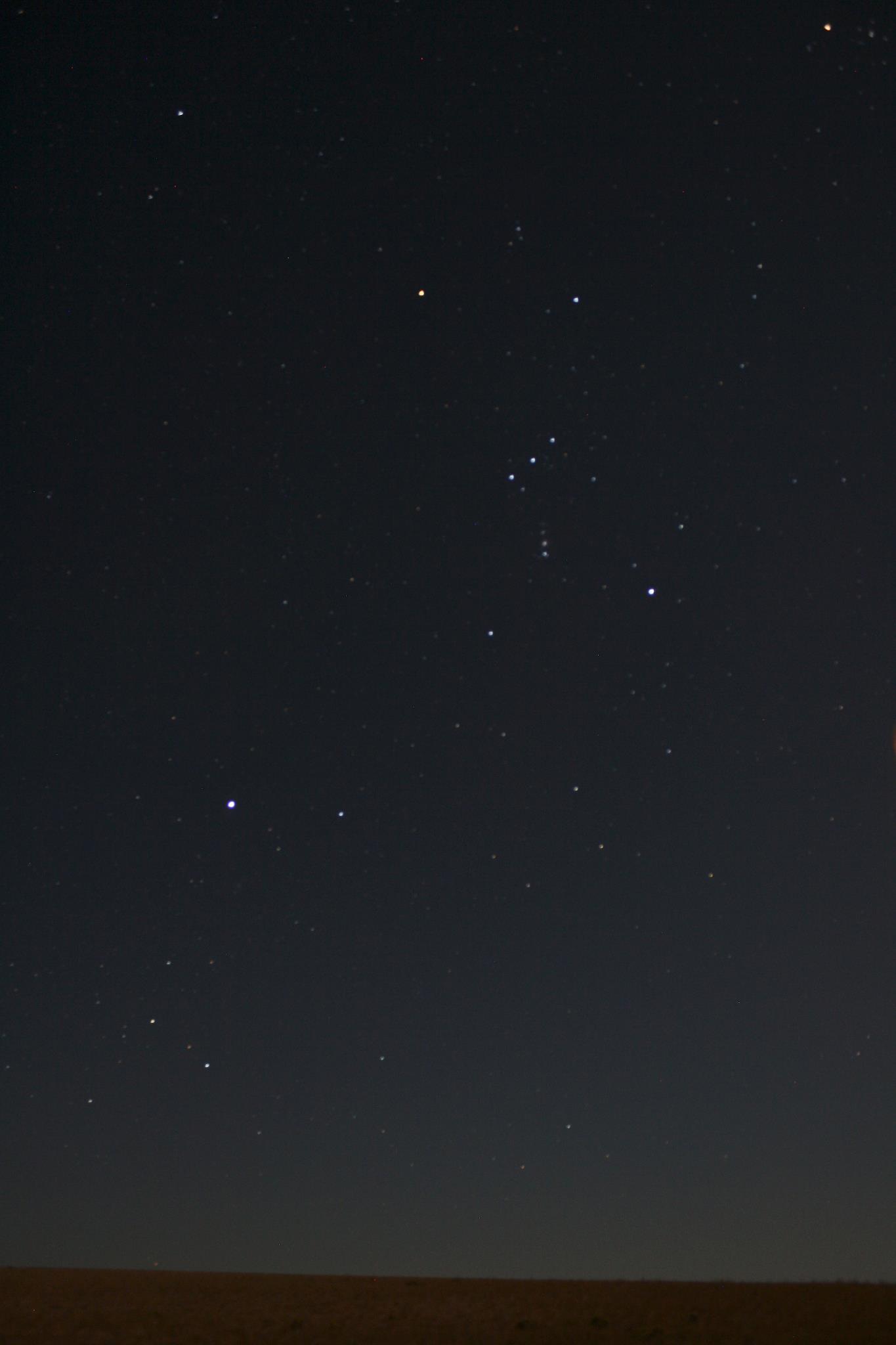
Watch for the brightest star, Sirius
Andy wrote:
Early this morning, looking south, I saw a beautiful star, bright and multicolored … Can you identify it for me?
And Paula wrote:
This morning two of us got up early. We found a pulsing star straight down the sky below Orion’s Belt. It was pulsing the colors of green, yellow, blue and red like a strobe light. I will search for it every morning as it was so enchanting.
If you’re up before daybreak on these October mornings, take a moment to see this star, which is the sky’s brightest star, Sirius. This star is so brilliant that you can even see it from a light-polluted city. And you can see it if you stay up late, too! It’s rising in the middle of the night now, as seen from around the globe, and is high in the sky – at its best – by dawn.
Want a specific view from your location on the globe? Visit Stellarium and enter your location.
In 2022, watch for Mars, too
This star is enchanting, so much so that – every year, beginning in Northern Hemisphere autumn – we get many, many questions about a multicolored star twinkling in the southeastern to southern sky after midnight. This star typically turns out to be Sirius, which is in the constellation Canis Major the Greater Dog and is sometimes called the Dog Star.
In 2022, another bright object will catch you eye near Sirius. It’s the red planet Mars. Sirius and Mars are nearly the same brightness now, with Mars only a hair brighter than Sirius. You can tell the two apart because Mars is red in color. Also, Mars will shine steadily, while Sirius will be twinking fiercely!
Mars is stationary at 11 UTC on October 30, 2022. That’s the day it begins retrograde motion and begins moving westward through the background stars. As seen from our earthly perspective, outer planets – a planet that orbits the sun outside Earth’s orbit – normally move eastward (direct) in front of the backdrop stars of the zodiac. But sometimes they move westward (retrograde). This happens when Earth catches up and passes them in our orbits around the sun.
Mars will reach opposition on December 8, 2022, when Earth flies between Mars and the sun for the first time in about two years.
For the next few months, from Earth’s perspective, Mars will appear to be drifting in retrograde (backwards) relative to the backdrop stars. Mars’ retrograde motion will end on January 12, 2023.

Why does Sirius twinkle so much?
Sirius appears to flash different colors when it’s low in the sky. Really, all the stars are flashing different colors, because light is composed of all the colors of a rainbow, and the journey through our atmosphere breaks starlight into its component colors via refraction. But you don’t notice the colors of the other stars much, because they’re not as bright as Sirius, which is the brightest star visible from anywhere on Earth.
Since our atmosphere is causing the light to break into its colors, and since Sirius is often seen low in the sky now (where you are peering at it through a thicker layer of atmosphere than when it’s overhead), the flashing colors of Sirius are very obvious. When Sirius is higher in the sky – which it is close to dawn in the month of October – or in the evening sky in January and February – you’ll find that Sirius shines with a steadier, whiter light.
So, on these October mornings, watch as Sirius winks at you in the wee hours before dawn!
More about Sirius: Dog Star and brightest star

Bottom line: We get many questions about a bright, colorful, twinkling star on these October mornings. It’s the star Sirius in the constellation Canis Major, brightest star in the sky. The bright planet Venus is also up before dawn now. But you’ll know Sirius, because Orion’s Belt always points to it.
Donate: Your support means the world to us
The post Brightest star, Sirius, high on October mornings first appeared on EarthSky.
0 Commentaires